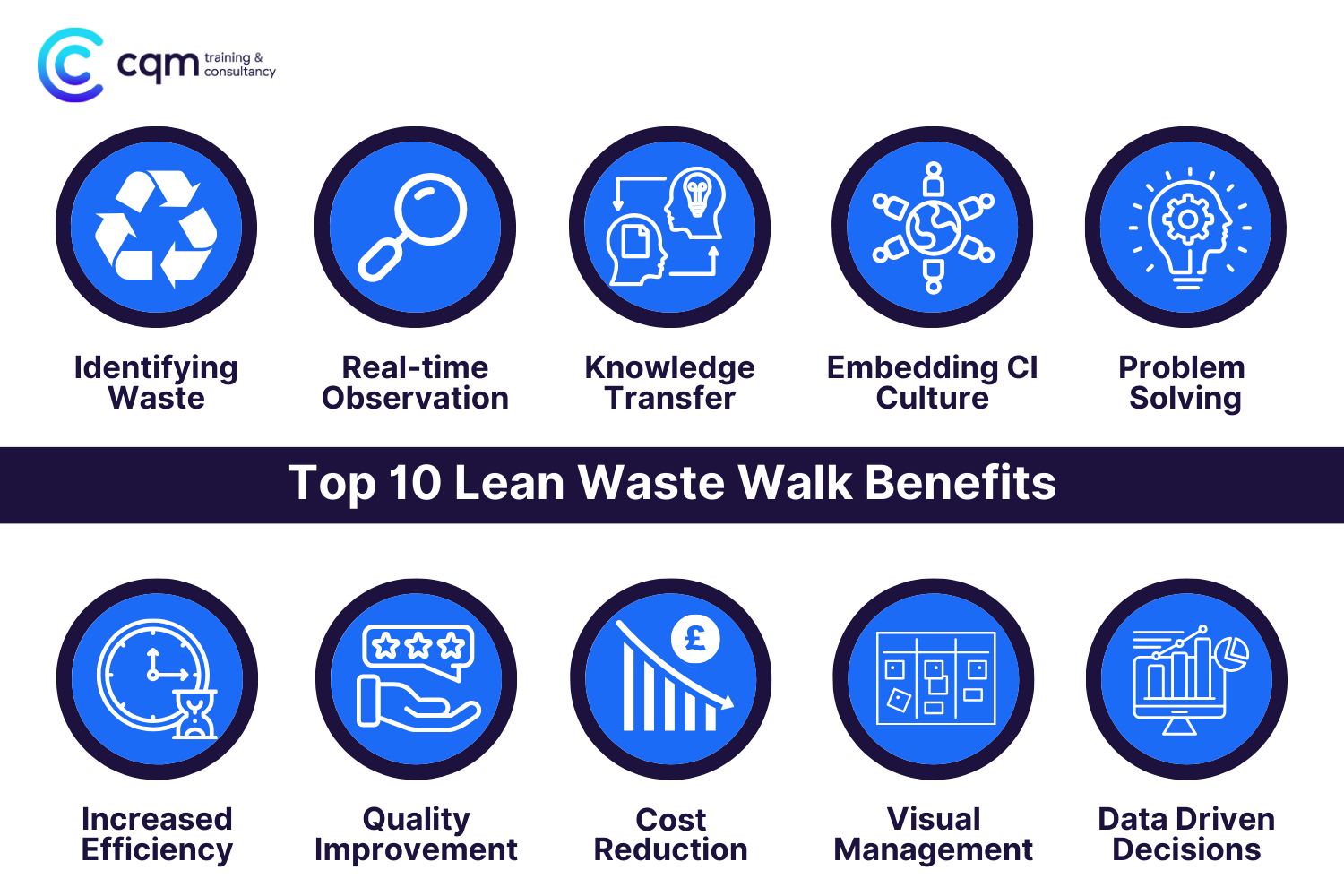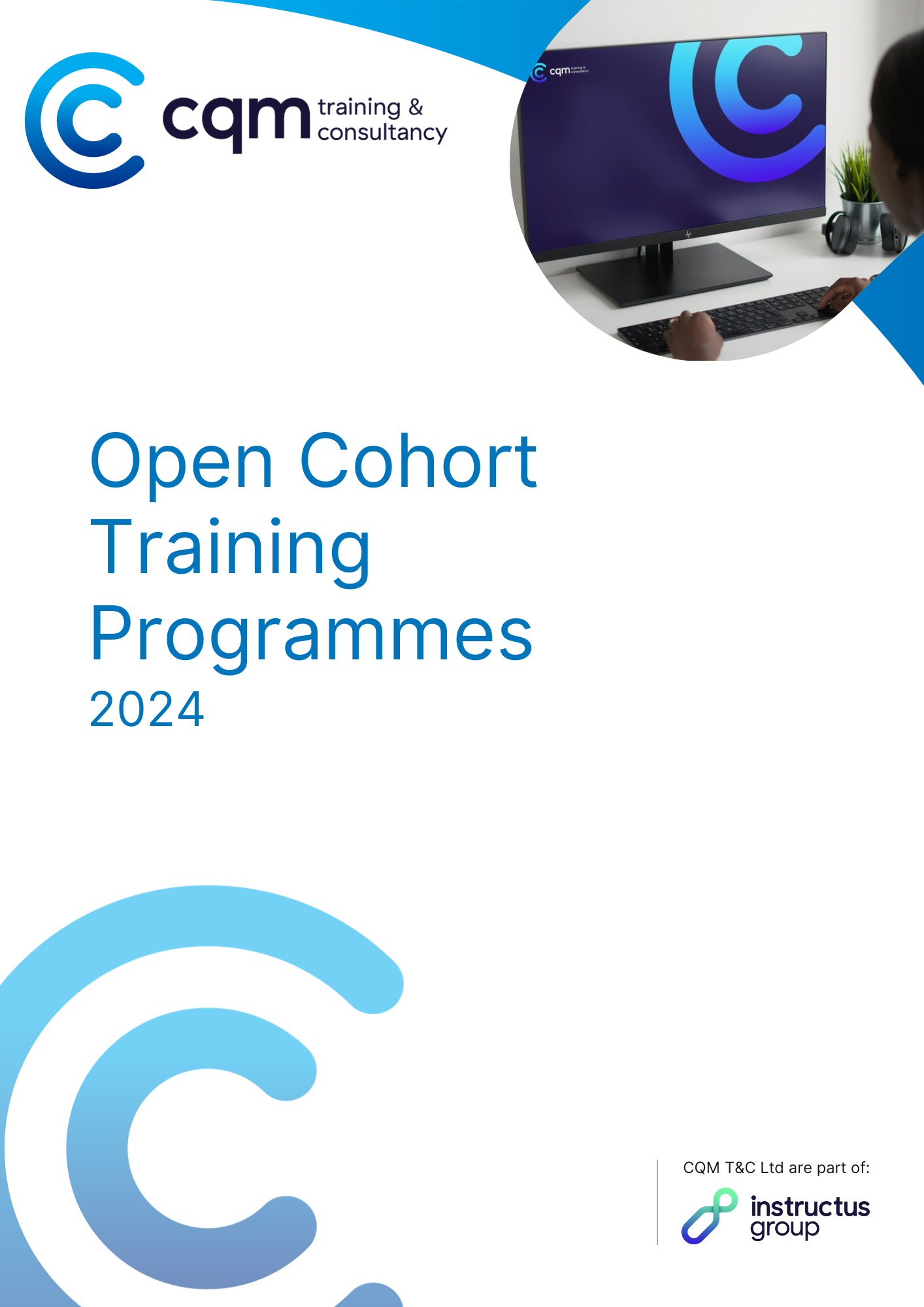Articles
Understanding Lean Waste Walks – What are they and why you should be doing them
Lean Waste Walk Introduction
A lean waste walk is a fundamental practice in lean methodology and continuous improvement. It involves a physical observation of the workplace and processes to learn and identify opportunities for improvement. It is a useful tool to uncover hidden inefficiencies and highlight areas of both opportunity and concern.
In this blog we consider the TOP 10 main benefits of carrying out a lean waste walk and why you should be adopting them as a regular exercise particularly if you are a manufacturer with a busy production line, but this is also applicable to non-manufacturering organisations too.
At CQM Training & Consultancy, we provide a free waste walk at your organisation and summary report. You can learn more about our free lean waste walk here.

1. Identifying Waste
Lean waste walks primarily aim to identify and eliminate waste in processes. The eight common categories of waste are over-production, wait time, transportation, over-processing, inventory, motion, defects, and employee skills. By walking through the workplace and observing processes first hand, you can spot these types of waste more effectively.
2. Real-time Observation
Observing processes in real-time allows you to see the actual workflow against standard operating procedures. This helps to bridge the gap between theory and reality. This allows for understanding the real problems and root causes. Even a small change can have a big impact that may have otherwise gone unnoticed.
3. Knowledge Transfer
Lean waste walks serve as a platform for knowledge sharing and communicating best practice. Experienced employees can share their expertise, while newcomers can learn from observing experienced colleagues. This creates greater consistency and ability to proactively tackle problems.
4. Embedding Continuous Improvement Culture
Regular waste walks foster a culture of continuous improvement within the organisation. When employees see the organisation trying to improve processes, they are more likely to do the same in their daily work. It changes the mindset and influences behaviours to support continuous improvement.
5. Problem Solving
After the first step of identifying waste, the next step is understanding the cause and how to improve it. Lean waste walks provide an opportunity to analyse the root causes of waste and develop solutions to address these issues. This creates huge benefits in both the short and long term.
6. Cost Reduction
Organisations can save time and money associated with unnecessary waste and other non-value-added activities. This can lead to significant cost savings over time, which supports the organisation to boost its bottom line.
7. Quality Improvement
Reducing waste often goes hand-in-hand with improving product or service quality by focussing on customer value. By reducing defects and minimising variance, organisations can provide higher-quality products or services more consistently.
8. Data-Driven Decisions
Lean waste walks offer metrics and insights that organisations can use for data-driven decisions. This data can inform process improvements, resource allocation, and strategic planning. Waste walks typically have a detailed summary report that outlines a clear action plan.

9. Visual Management
During waste walks, it’s common to see visual management tools such as value stream maps, process flowcharts, and 5S principles. These tools make waste more visible and easier to understand for a variety of stakeholders. This helps clarify where improvements can be made and the impact they can have.
10. Increased Efficiency
By minimising waste and streamlining processes, lean waste walks can lead to increased productivity and shorter lead times. This means that we can use the same or even fewer resources to produce more output, while increasing customer satisfaction.
Summary
In conclusion, conducting lean waste walks is a valuable practice for any organisation. It can help to improve efficiency, reduce waste, enhance quality, and cultivate a culture of continuous improvement. It is an essential component of Lean methodology and can yield significant benefits when implemented effectively.
For any advice or to book a free waste walk with our industry experienced experts, get in touch with us today!